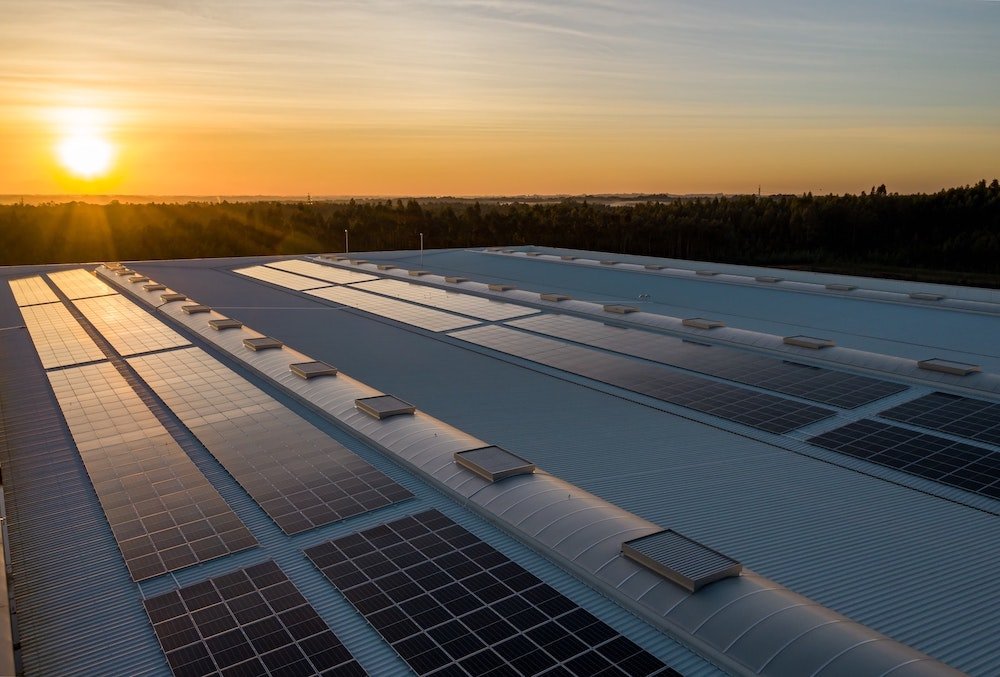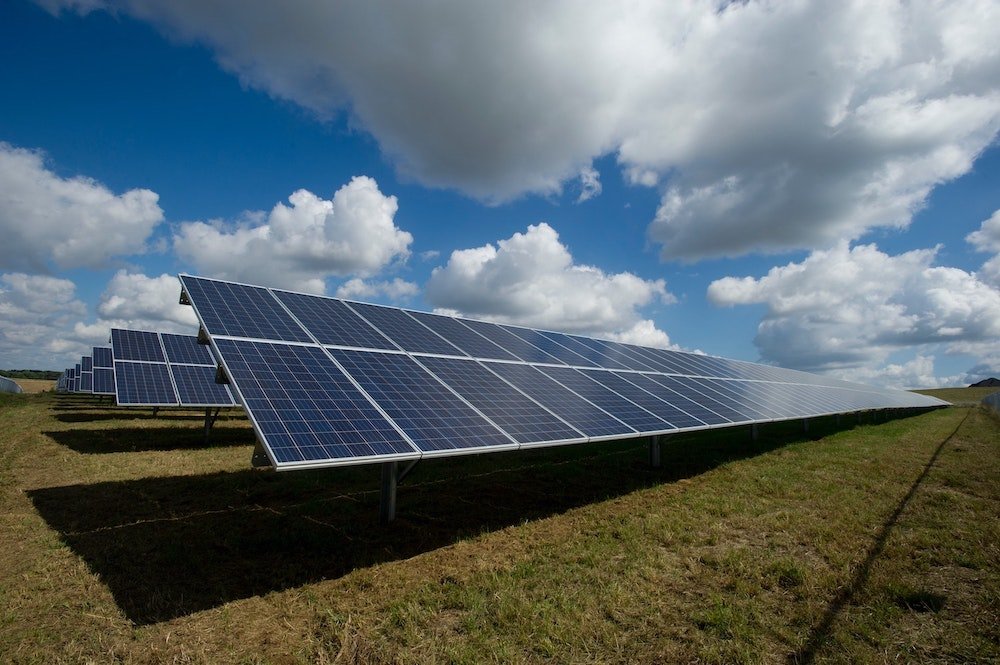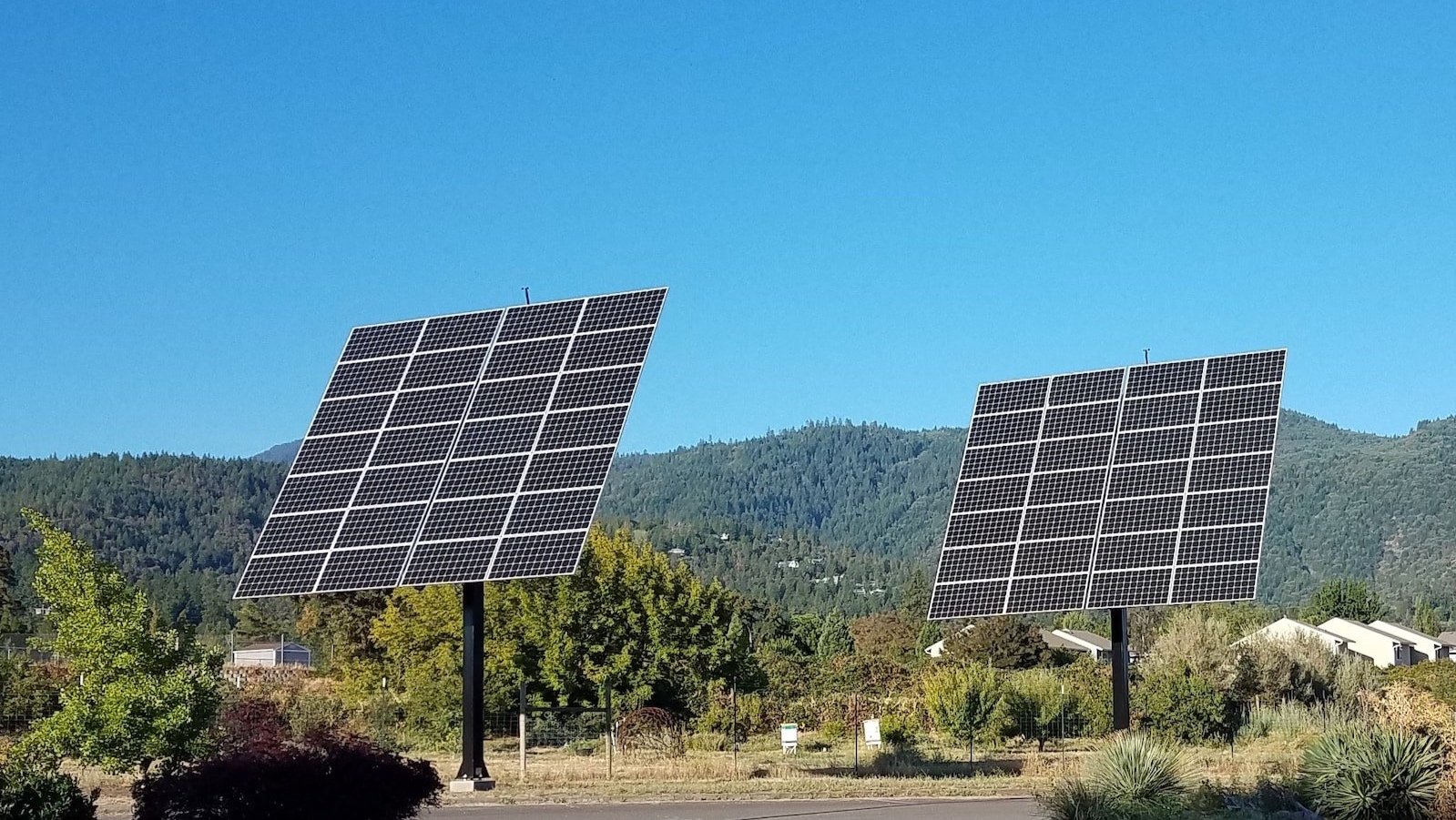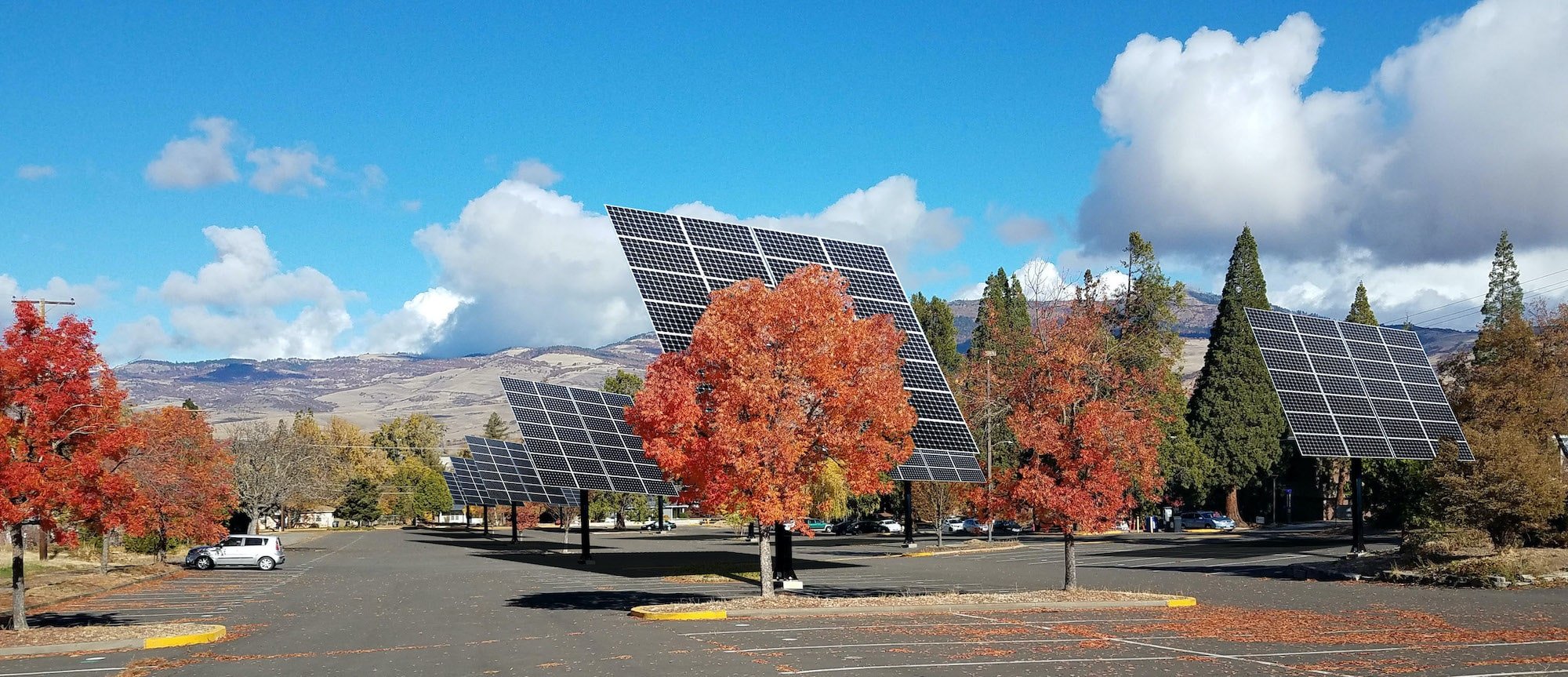Energy sovereignty for Tribal Nations
Why energy sovereignty?
Access to affordable and reliable electricity is often unattainable for tribal communities across the United States. As a result, many Native households face a rate of energy insecurity twice that of non-Natives. This is primarily due to factors such as remote locations, exorbitant energy prices, and other challenges.
Tribal nations have a unique opportunity to pursue energy sovereignty, which can bring electricity to their communities and business enterprises while establishing shared utility responsibility. By achieving energy sovereignty, tribal communities can ensure that their electricity is clean and respectful of Mother Earth. And the availability of billions of dollars allocated by the Inflation Reduction Act and Justice 40 initiative enhances this opportunity today more than ever before.
Energy sovereignty enables communities to own and manage the systems that generate their energy. There are various ways to achieve energy sovereignty, such as electrical co-ops, community solar projects, and microgrids. By owning the technology and infrastructure that powers their community, tribal nations can establish reasonable rates and hold more control. Energy sovereignty supports the right to self-determination and strengthens communities, regardless of whether the reservation is rural or urban.
Beyond energy equity
The goal of energy equity initiatives is to ensure that Native communities have access to the same power grids as their municipal and regional counterparts.
With energy sovereignty, however, communities can secure reliable and affordable energy for their members on their terms and timeframe. They can establish their own micro-utility grids through the installation of community solar projects that provide immediate and long-term cost savings while producing clean energy for all.
Which type of solar installation is best for energy independence?
When investing in solar, it is important to understand the differences between types of solar photovoltaic (PV) systems to find the one that suits your project best. Below is a brief overview of roof-mounted and fixed ground-mounted systems, and single-axis and dual-axis ground-mounted solar trackers.
Rooftop solar
Rooftop solar or roof-mounted solar is by far the most common residential solar type in the U.S. While larger scale roof-mounted PV systems make up a significant percentage of commercial installations as well, they continue to face challenges due to roof size limitations, roof penetration and load restrictions, shading issues, and non-ideal roof orientation.
Roof-mounted solar can be a good option so long as:
● The surrounding area is free of tall structures that create shade (trees, buildings, etc.)
● The roof is in good condition with more than 10 years left before reroofing becomes necessary
● The roofing material can accommodate the installation process (tiles, slate, plastic, and membrane roofs generally don’t)
● And the roof has a large area facing south and/or west
Since panels are placed on the roof in a fixed position, they can accumulate snow and debris, and proper cleaning of the panels should be done once or twice annually by a professional to avoid the risk of panel damage (more cleaning is needed in certain climates). Installations which are not done by properly trained professionals can also lead to damage to the roof and its building structure as well.
Fixed ground-mounted solar
This type of solar power system is commonly used in commercial, community and utility-scale solar installations. Solar panels are mounted onto metal frames which are installed in areas with good sun exposure to optimize energy production. Fixed ground-mounted solar is best suited for land that is wide open, level, and not in use for other activities.
The disadvantage of fixed ground-mounted solar power systems is that these installations are in a fixed position (while the sun moves across the sky throughout the day), so energy harvest is limited. As a result, to generate enough power for a community, usually a large land area needs to be dedicated exclusively to solar. Why? Because the ground-mounted systems usually don’t have much ground clearance or space between rows, so the use of the site they’re installed on is greatly compromised. While communities can allow the growth of native grasses and have sheep graze under solar panels, or plant low crops between rows which require hand-harvesting, large-scale agricultural activity where mechanized cultivation or harvest is necessary is not an option with such low-sitting systems.
There are options, however, for communities that want to install fixed ground-mounted solar power systems without losing valuable land use: these larger scale projects can be specifically designed for and installed on brownfields (former industrial/contaminated land, decommissioned landfills). Another solution is solar carports for parking lots, where elevated steel structures hold the panels above the parking spaces with enough ground clearance for vehicles. It’s important to keep in mind, however, that because this type of solar panel system is in a fixed position, it will require professional cleaning minimum twice a year, and in areas with regular snow, they will also need active snow removal for proper energy generation during colder months.
For communities with land that cannot be used for other activities, or that have a large, south-facing parking lot for solar carports (and are located in the southern U.S. with plenty of sunshine to make the investment financially viable), fixed ground-mounted solar solutions might meet their needs.
Solar trackers
There are two types of solar trackers: single-axis and dual-axis. Commercially available single-axis solar trackers pivot up and down along their horizontal axis, following the sun east to west. Dual-axis solar trackers are able to pivot along both a horizontal and vertical axes, allowing the panels to track the exact position of the sun for maximized energy production throughout the day, every day of the year.
Solar trackers come in a wide range of designs. The big advantage is their efficiency. Single-axis solar trackers generate roughly 20-30% more power than fixed systems, while dual-axis solar trackers can produce 45-70% more than their non-tracking counterparts.
While single-axis solar tracking systems are installed in long, parallel rows, and are available only for large utility-scale installations, the more efficient dual-axis solar trackers offer scalability from a single unit to as many as the community needs. What’s more, with elevated designs, like the Stracker dual-axis solar trackers that offer 14-foot ground clearance, they maintain full use of the ground below. This makes them ideal for a variety of sites: parking lots, fields, agricultural and industrial areas, open spaces. Their single pole mounting allows installation even on hilly or difficult terrain. Elevated solar trackers are also the optimal solution for using the newest-generation, bifacial panels that capture the sun’s energy on both sides. With these Stracker dual-axis solar trackers produce up to 70% more power than fixed PV systems of the same size.
Elevated Stracker dual-axis solar trackers offer highest energy production and a minimum 14 ft ground clearance
Ultimately, for communities looking for a solution that preserves use of space while maximizing energy production, elevated dual-axis solar trackers are the most efficient option.
Continue reading to learn how Stracker Solar can partner with your community to help make energy sovereignty a reality.
Why Stracker Solar?
Solar designed for communities
From the beginning, Stracker Solar has been focused on developing a pole-mounted solar solution with a small physical footprint for communities that provides significantly higher energy output per solar array than traditional PV (photovoltaic) systems.
Because of the unique dual-axis tracking design, each Stracker solar tracker produces 50-70% more power than a rooftop or fixed ground-mounted solar panel system with the same number and type of panels, on a footprint that’s less than five square feet. This significant energy gain is achieved by the movement of the solar arrays as they follow the exact path of the sun, maximizing the panels’ direct exposure to an amazing and free energy source all day, every day.
The single-pole elevated Strackers allow your community to install solar right where the energy is needed without sacrificing the use of valuable land or disrupting community spaces. You can co-locate a Stracker installation with parking areas, public spaces, ranches, and farmland.
To support the energy sovereignty of tribal communities, Stracker solar trackers work with both battery backup and net metering options. Our focus is on designing solar power systems to meet each community’s unique needs and preferences.
Solar casinos: A more economically efficient path
Tribal casinos and enterprises play a vital role in providing economic opportunities for tribal communities and their surrounding areas. However, these establishments typically have substantial electricity requirements. Fortunately, solar power systems, specifically Stracker elevated solar trackers, offer an ideal solution for these energy needs.
Stracker solar tracker systems can be conveniently installed throughout the casino parking lot, without sacrificing valuable parking spaces. Depending on the project size, these installations can generate a significant portion, if not all, of the power required by the casino while also providing ample shade for their guests’ vehicles. The Stracker design ensures a minimum clearance of 14 feet, accommodating not only cars and trucks but also larger vehicles like buses, semi-trailers, and fire engines.
On average, Stracker Solar installations offer a simple payback period of 4-6 years, taking into account tax credits and incentives. With a 30-year structural and operational warranty, each Stracker project provides over 20 years of free electricity. This eliminates concerns about roof damage, upkeep, or land use loss associated with traditional solar panel systems. As a result, utilizing Stracker Solar translates to over 20 years of additional funds flowing back into the community through substantial electricity savings.
By harnessing the power of solar energy, tribal casinos can not only meet their electricity demands but also significantly reduce their operational costs, promoting financial sustainability and supporting the long-term growth and prosperity of their communities.
The savings associated with going solar can represent hundreds of thousands of dollars saved each year.
Consider this example of two casinos in California and Oregon:
A 145,000 sq. ft. casino in California that uses 3,310,000 kWh power annually (and pays an average electrivity price of 0.28¢ per kWh), can save $876,680 each year after the payback period by going 100% solar.
A 78,000 sq. ft. casino in Oregon with an annual 1,690,740 kWh power usage (at 0.14¢ per kWh), can save more than $236,000 with solar each year after the payback period when 100% of their energy usage is supplied by the solar installation.
Want to find out how much a solar casino could save in your community?
Use this formula to determine your savings:
annual electricity used x the cost per kWh for your electricity
= savings with solar providing 100% of energy used.
Creating pathways to economic growth
We understand that financing a large-scale solar project can pose challenges for any community. However, we are dedicated to collaborating with tribes to identify and leverage various federal and state funding opportunities. These include the extended solar investment tax credits available until 2032, Justice 40 funding, Inflation Reduction Act funding, as well as public and private sources. Our goal is to help make your solar project a reality.
Currently, all federally recognized tribes are eligible for direct-pay tax refunds on solar installation projects. This means that your community can receive a substantial portion of the project costs back. By combining the available 30% tax refund with other incentives for building on tribal-owned land and upcoming grant opportunities like the Greenhouse Gas Reduction Fund and Environmental and Climate Justice Block Grant, Native communities can transition to energy sovereignty in a more affordable manner.
In addition to designing and installing solar projects for your community, Stracker Solar is actively working on partnering with tribes to establish and support clean energy apprenticeship programs. These programs involve tribal members in the fabrication and installation of Stracker units, providing a pathway to economic growth that aligns with the pursuit of energy sovereignty for tribes across the United States.
By leveraging funding opportunities, tax incentives, and grant programs, we aim to empower tribal communities to take control of their energy future while simultaneously fostering economic development and creating sustainable job opportunities - helping to secure a future for the seven generations that will come after us.
A partner for solar projects
Stracker Solar is located in the Rogue Valley in Southern Oregon, the home of Chasta, Latgawa, and Takelma people - known as the Confederated Tribes of Grande Ronde and Confederated Tribe of Siletz Indians.
When you choose to go solar with an elevated Stracker dual-axis solar tracker system, you’re also getting a partner focused on learning about and honoring your community’s unique needs and preferences. We recognize that the path to energy sovereignty is complex, and each community will have its own circumstances impacting what the transition to renewable energy looks like.
As part of every Stracker Solar project we provide:
● Design based on your community’s input for its unique energy needs and project location
● Support to qualify for tax credits and refunds, incentives, and source grant funding
● Option to partner with Stracker Solar for manufacturing and installation apprenticeships
● Post-installation support and our 30-year structural and operational warranty
A point to remember
A Stracker dual-axis solar tracker produces 50% more energy than an optimally facing rooftop or fixed ground-mounted solar installation, and 70% more than solar installed on a flat rooftop.
Contact us
to learn more about Stracker Solar’s approach to energy sovereignty for Tribal communities.







